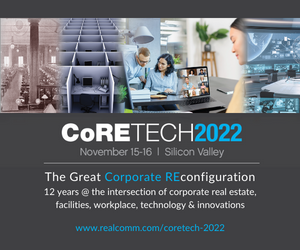Take Steps Towards Healthier Air

Studies have shown that we spend 90% of our time indoors. As such, the quality of the air inside buildings is important not only for occupant comfort but also for their overall health and sense of well-being.
Poor indoor air quality (IAQ) has been tied to symptoms like headaches, fatigue, poor concentration, irritation of the eyes, nose, throat and lungs as well as specific diseases like asthma.
Many factors affect indoor air and environmental quality, from insufficient ventilation and air filtration to temperature and humidity levels beyond typical limits for human comfort. Contaminants can also be introduced from outdoor air, particularly in areas known to have high levels of outdoor air pollution, such as wildfires and other factors. Even common pollutants, like dust, mold, or cleaning supplies, can add to or cause poor IAQ.
Finally, studies, like The CogFx Study, have also shown that indoor contaminants can cause decreased levels of cognition which in turn leads to poorer strategic thinking, test scores and decreased occupant productivity.
So, by taking steps to improve indoor air quality, owners, facility management and others can play a significant role in supporting occupants’ health and productivity while delivering bottom line benefits to businesses and society.
Ways to Improve Indoor Air Quality
Before undertaking any of the recommendations contained herein, it is vitally important that the building’s HVAC equipment be in top operating condition. A full re-commissioning is recommended for equipment that has not been recently serviced and the state of repair is unknown.
Outside Air Ventilation
Bringing in more fresh outside air to dilute and replace contaminated indoor air can help lower CO2 levels, reduce the concentration of airborne pathogens and other contaminants, and generally help minimize the risk of airborne infectious disease transmission indoors.
Consider these options to improve outdoor air ventilation:
- Increase the maximum position of the outside air intake dampers and/or economizers to the greatest extent possible consistent with the capacity of the air handling equipment
- Initiate a pre and/ or post occupancy purge cycle by running the HVAC equipment for 1 to 2 hours before and after normal occupancy periods
- When increased mechanical ventilation is not possible, consider opening windows and outdoor facing doors as appropriate to improve ventilation
Recommendations published in The Lancet Report, with input from faculty and alumni of the Harvard TH Chan School of Public Health and others, recommend adjusting ventilation to deliver an Air Changes Per Hour (ACH) rate of at least 4-6 ACH. When this ACH cannot be achieved through outside air ventilation alone, a layered strategy is often recommended. “Effective” ACH refers to the combination of actual outside air intake, filtered return air and the Clean Air Delivery Rate (CADR) that installed air cleaning devices, such as Carrier’s OptiClean Air Scrubber provide.
ASHRAE also has an online calculator (eACH Calculator) that can be used to compute the eACH rate for typical HVAC system types.
Air Filtration
Improving filtration with MERV 13 or higher rated filters can reduce particulate matter (PM2.5) concentrations providing improved particulate control and helping reduce airborne contaminants including viruses in controlled spaces.
Consider these options to improve air filtration:
- Utilize the highest efficiency filter that the equipment will accommodate (MERV 13 or higher if possible)
- Keep in mind that changes in duct-mounted filtration may require adjustment to the controls, such as fan speed, airflow setpoints and differential pressure switches used to monitor filters
- Replace air filters more frequently
- Increases in filter effectiveness can require more frequent filter replacement. A differential pressure-based filter status switch can help determine when a filter change is needed
- In instances where increased efficiency duct mounted filtration is not possible, install properly sized portable HEPA based (high-efficiency particulate air) air filtration systems
- Augment increased ventilation and filtration with the installation of additional air purification solutions based on proven technologies such as high-wall UV-C lighting equipment
Humidity Control
Keeping humidity levels between approximately 40% and 60% may help reduce the ability of viral particles to survive. Depending upon a building’s climate zone and overall design, humidification equipment may be added in colder climates, and dehumidification settings can be adjusted in more humid locations.
Monitor Air Quality
Constant monitoring of your building’s air quality data can provide you with actionable insights necessary to modify your building’s HVAC equipment performance to improve IAQ and better promote the health and well-being of your occupants.
Consider these options to monitor air quality:
- Install carbon dioxide (CO2) sensors
- During full occupancy, CO2 levels can vary but levels below 750 to 900 ppm are targeted under International WELL Building InstituteTM standards. Note: while CO2 levels can be an important contributor to overall IAQ and an indicator of overall outside air ventilation effectiveness, CO2 does not show the presence or absence of viral contaminants.
- Selecting a CO2 sensor with an integrated digital display can also provide a useful means of communicating the current CO2 level to occupants
- Install real-time IAQ sensors and a data monitoring platform
- To fully understand the breadth of factors that contribute to your building’s overall indoor air quality, consider selecting IAQ sensors that monitor CO2 as well as particulate matter (PM2.5), temperature, humidity, volatile organic compounds (VOCs), and more. Once these sensors are installed, the data can then be compared against accepted standards and next steps can be determined.
- With Carrier’s Abound™ Healthy Air System real-time IAQ data is continuously monitored and compared to the International WELL Building Standard™. Abound, a suite of connected solutions and a cloud-based digital platform, aggregates, analyzes and visualizes data collected from various building systems, equipment, and sensors. With or without the presence of a Building Automation System, you can utilize the Abound Healthy Air system. It allows you to better understand the actions that need to be taken to improve your HVAC equipment performance and instill confidence in the health and well-being of your indoor environments.
This Week’s Sponsor
Embracing open software/hardware platforms, Lynxspring develops, manufactures, and distributes edge-to-enterprise solutions creating smarter, sustainable buildings, better energy management systems, equipment control and specialty machine-to-machine and IoT applications. Lynxspring technologies simplify connectivity, integration, interoperability, data access and normalization and analytics from the edge to the enterprise. The company’s solutions are commercially deployed in millions of square feet in the United States and internationally. www.lynxspring.com
Read Next
 5/15/2025
5/15/2025
Tech, Talent and Transformation: 2025 Digie Finalists Announced For 27 years, Realcomm has presented the Digie Awards to acknowledge companies, real estate projects, technologies, and individuals that have advanced the commercial real estate industry through the strategic use of technology, automation, and innovation.
 5/15/2025
5/15/2025
Empowering Space Management with Data-Driven Visualization For effective CRE space management, it’s critical to centralize lease data, maximize rental square footage (RSF), improve energy efficiency and reconfigure spaces to meet changing needs.
 5/8/2025
5/8/2025
The AI-Powered Workplace Evolution: Redefining the Business Landscape In today's rapidly evolving business environment, the fusion of Artificial Intelligence (AI) and Workplace Management is revolutionizing the way organizations approach workspace optimization and operational efficiency.
 3/27/2025
3/27/2025
The Convergence of Edge Computing, Cloud, and AI in Building Automation and Smart Buildings In the built environment, we have seen the convergence of Operational Technology (OT) and Information Technology (IT), later expanding to include Workplace Technologies (WP).






%20(1)%20(1)%20(1).png)







